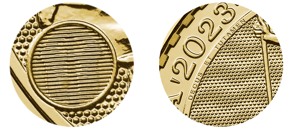Tavex uses cookies to ensure website functionality and improve your user experience. Collecting data from cookies helps us provide the best experience for you, keeps your account secure and allows us to personalise advert content. You can find out more in our cookie policy.
Please select what cookies you allow us to use
Cookies are small files of letters and digits downloaded and saved on your computer or another device (for instance, a mobile phone, a tablet) and saved in your browser while you visit a website. They can be used to track the pages you visit on the website, save the information you enter or remember your preferences such as language settings as long as you’re browsing the website.
| Cookie name | Cookie description | Cookie duration |
|---|---|---|
| tavex_cookie_consent | Stores cookie consent options selected | 60 weeks |
| tavex_customer | Tavex customer ID | 30 days |
| wp-wpml_current_language | Stores selected language | 1 day |
| AWSALB | AWS ALB sticky session cookie | 6 days |
| AWSALBCORS | AWS ALB sticky session cookie | 6 days |
| NO_CACHE | Used to disable page caching | 1 day |
| PHPSESSID | Identifier for PHP session | Session |
| latest_news | Helps to keep notifications relevant by storing the latest news shown | 29 days |
| latest_news_flash | Helps to keep notifications relevant by storing the latest news shown | 29 days |
| tavex_recently_viewed_products | List of recently viewed products | 1 day |
| tavex_compare_amount | Number of items in product comparison view | 1 day |
| Cookie name | Cookie description | Cookie duration |
|---|---|---|
| chart-widget-tab-*-*-* | Remembers last chart options (i.e currency, time period, etc) | 29 days |
| archive_layout | Stores selected product layout on category pages | 1 day |
| Cookie name | Cookie description | Cookie duration |
|---|---|---|
| cartstack.com-* | Used for tracking abandoned shopping carts | 1 year |
| _omappvp | Used by OptinMonster for determining new vs. returning visitors. Expires in 11 years | 11 years |
| _omappvs | Used by OptinMonster for determining when a new visitor becomes a returning visitor | Session |
| om* | Used by OptinMonster to track interactions with campaigns | Persistent |
| Cookie name | Cookie description | Cookie duration |
|---|---|---|
| _ga | Used to distinguish users | 2 years |
| _gid | Used to distinguish users | 24 hours |
| _ga_* | Used to persist session state | 2 years |
| _gac_* | Contains campaign related information | 90 days |
| _gat_gtag_* | Used to throttle request rate | 1 minute |
| _fbc | Facebook advertisement cookie | 2 years |
| _fbp | Facebook cookie for distinguishing unique users | 2 years |
How Is Gold Money? And Why Is Gold So Valuable?

Gold has been used as money for thousands of years and has a very high value per gram. Why have people given gold such a high value? Why can a gold coin be considered as money?
First of all, we need to talk about the properties of money. In the dynamic world of economics and finance, the very concept of money remains an anchor. To maintain the integrity and functionality of money across ages and cultures, money must possess certain intrinsic properties. Various economic thinkers and financial experts have highlighted numerous characteristics, but let’s delve into six foundational pillars that have been universally acknowledged.
Durability
Just as the Roman denarius coins, which stood the test of time and corrosion, modern money must be resistant to both natural and man-made adversities. Whether it’s paper money, digital currency, or a tangible asset, durability ensures longevity.

Transportability
Reflect on the Silk Road, where merchants would travel vast distances, trading goods and currencies. Money should be easily portable and transportable to facilitate seamless trades and transactions across borders.
Divisibility
Gold bars can be melted down to coins, and coins can be broken down to smaller denominations. Similarly, modern money, be it digital or physical, needs to be divisible into uniform, smaller units without losing its overall value.

Scarcity
The limited availability of precious metals like gold or the controlled production of paper currency by central banks helps preserve their value. An overabundance can lead to inflation and devaluation, making scarcity a crucial attribute.

Acceptability
The ancient Mesopotamians utilised silver as a medium of trade, not for its shine but for its acceptability. Money, regardless of form, must be universally accepted as a medium of exchange and a reliable store of value.
Recognisability
The intricate designs on banknotes or security features in digital currencies aren’t mere aesthetics. They serve as distinguishing marks, making money easily recognisable and hard to counterfeit, much like the unique patterns on ancient coins.


In essence, while the medium and methods might have evolved—from shells to coins, from paper to digital bytes – the fundamental properties of money remain unchanged, ensuring its pivotal role in the world’s economic stage.
Now the question arises: are there any substances or elements on earth that have all these characteristics?
Let’s take the periodic table of chemical elements, which many of you will be familiar with from chemistry lessons. Why the chemical element table? Because a chemical element can be defined as a substance that cannot be separated into simpler substances by chemical methods. They are therefore fundamental building blocks from which other substances can be created; for example, a molecule of water is made up of two hydrogen atoms and one oxygen atom.
There are a total of 118 elements in the table of chemical elements. Let’s see which would be best suited to making money from here. Let’s use the exclusion method.
- Firstly, for obvious reasons, we cannot use elements in their gaseous and liquid states as money. Who puts helium in their pocket and goes to the shop with it? This excludes 14 elements.
- Secondly, lanthanides, actinides, and elements such as arsenic can be radioactive or toxic. If carried in your pocket, they will irradiate or poison you. This rules out a total of 34 elements.
- Third, alkali metals and alkaline earths are highly reactive and can easily catch fire. They are generally found in nature only in compounds. This rules out a total of 12 elements.
- Fourth, elements that are too rare or not found at all on earth—this rules out a total of 26 elements.
- Fifthly, elements that are too abundant on earth. Examples are iron, copper, and nickel. In order to use iron as money, for example, we need to carry very large quantities of it. This excludes a total of 27 elements.
This leaves precious and noble metals such as rhodium, palladium, platinum, silver, and gold.
Gold has become the best money
Rhodium is very rare, it is extremely fragile, and it is difficult to mould. This makes it very difficult to create bullion or coins.
Palladium and platinum were only discovered a few centuries ago. Both have a much higher melting point than gold and silver, which has made them more difficult to work. Despite many of their properties, their short history has not made them good money and they are mainly used in catalytic converters in cars to help reduce emissions.
Between 1828 and 1845, platinum coins were in circulation in Russia as money, but as they were difficult to process and similar to other metals, their use was abandoned. With today’s technologies, the metal is no longer so difficult to process, and we can easily use it as a representative coin. This means that platinum could potentially be used as money in the future.
Silver has essentially all the properties of money and has been used as money a lot in history. However, it has one disadvantage compared to gold – it tarnishes and oxidises.
 Out of stock
Out of stock
What remains is pure gold, which has all the properties of money. It is durable – gold can only be completely destroyed by a nuclear reaction. It is portable (a gold standard and a token could be used today for larger quantities). Gold bullion is also divisible, and gold is so easy to work that one gram of gold can be made into a 2-kilometre-long wire.
There is a limited amount of it on Earth, but it is not too rare. It has been widely accepted for millennia. It is also easily distinguishable and recognisable from other metals because of its golden luster.
All of these factors mean that gold is the most natural currency found in nature. This gives gold a high intrinsic value in human society compared to many other metals and elements.
 In Stock
In Stock
Key Takeaways
Gold, with its radiant luster and myriad of beneficial properties, has been humanity’s choice for currency for millennia. It uniquely meets all the essential criteria for money better than any other element on the periodic table. Moreover, in the fluctuating economic environment where fiat currencies can be influenced by political and economic conditions, gold offers a stable, consistent value. Its measure in troy ounces ensures a universal standard, and even as the price of gold varies, its inherent value as a safe haven in turbulent times remains unshaken.
People across the world, when apprehensive about the stability of their nation’s currency, often turn to storing wealth in ounces of gold. This metal doesn’t just serve as money; it’s a reflection of trust, a hedge against uncertainty, and an asset that stands the test of time. With its deep-rooted history and intrinsic qualities, gold is poised to continue its role in the world’s financial landscape for the long term.

















